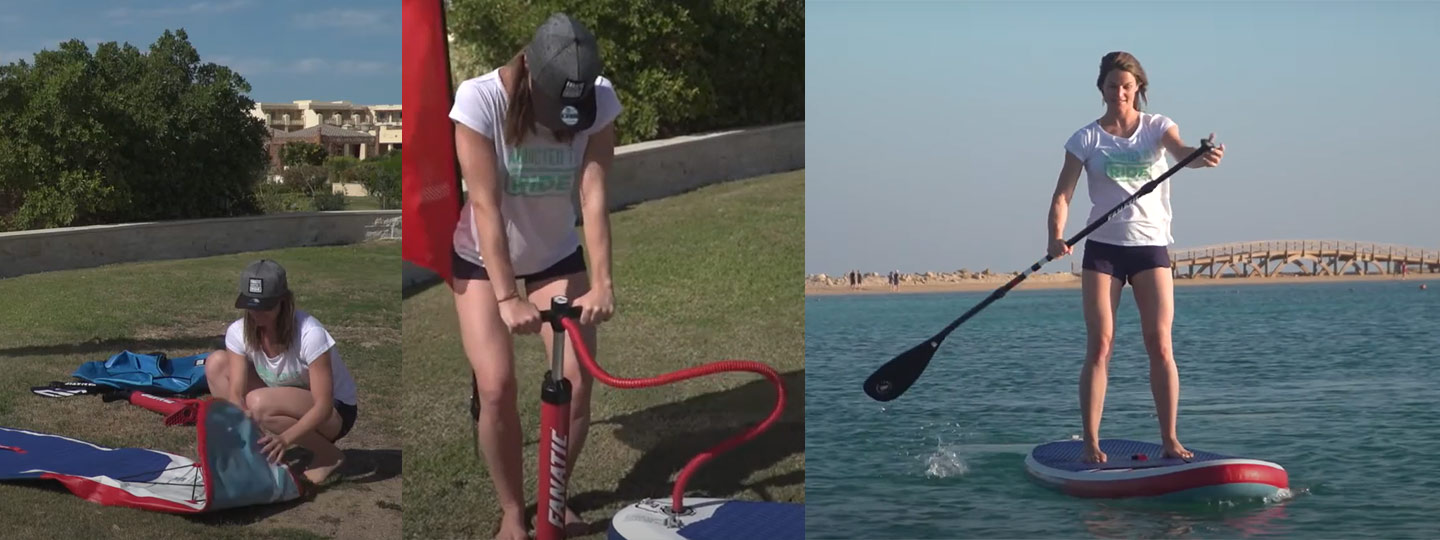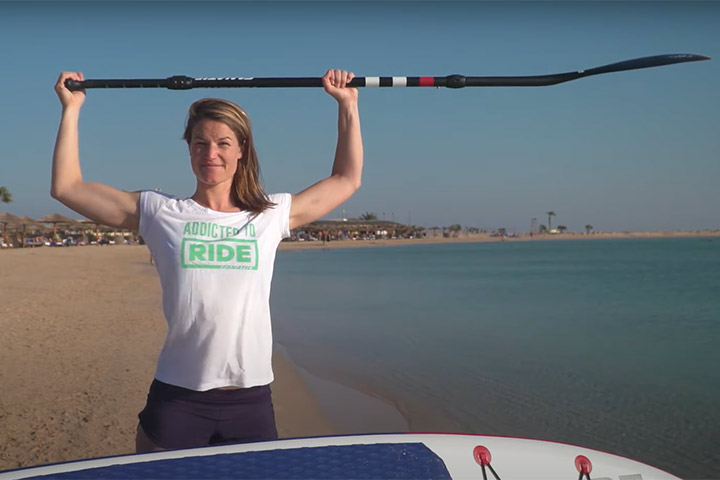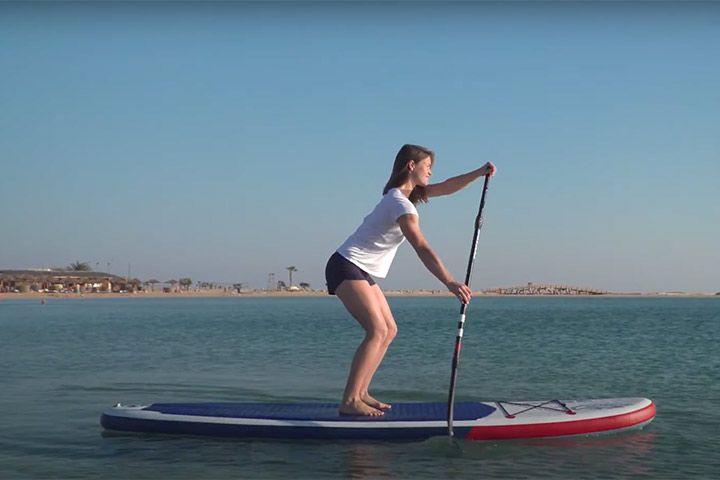Paddle Board Techniques
If you’ve just bought a paddle board there are some essential things you need to do before going afloat. Here is a quick run through to make sure your time afloat is maximized.

Content created by King of Watersports KOW Copyright
- Once you are at the water’s edge and ready to inflate your board make sure the SUP valve is the up position, this will ensure that the board stay inflated when you disconnect the pump hose.
- Your pump will have two options for pumping up the board. One will put lots of air in quickly and the other will put in smaller amounts of air easily. Start inflating your board with lots of air quickly and then as it gets hard to inflate switch the pump into the other mode to put smaller amount of air in slowly.
- Make sure your get the board solid and try to get the recommended pressure into the board. It will become hard to inflate the closer you get to the recommended pressure but stick with it.
- Replace the valve cap to ensure it cant accidently be deflated.
- Turn the board over and attach the fin and make sure it is secure. Leave the board upside down until your ready to go afloat. This will save your fin from damage.
- Assemble your paddle and adjust tot the right height (Comfortably have one hand on top of the paddle with a slight bend in the elbow)).
- Turn the board onto its side reach down and grab the handle and with your spare hand pick up your paddle.
- Go to the waters edge and check that there are no underwater obstructions. Walk into the water to about knee deep and lay the board down and climb on. Aiming to land with your knees either side of the handle will give you the most stability.
- Stay on your knees and practice paddling in a straight line and doing some turns. Wide stroke will help turn and keeping the paddle near the board will help you go straighter.
- When comfortable stand up slowly and aim for your feet to be about shoulders width apart. Keeps your knees slightly flexed and keep your head up looking where you are going.
Weather
Check the weather forecast. Ideally sunny calm conditions is what your after but lacking any sun you can still get out but look at the wind as that can make or break a session. Light winds are the best for paddle boarding but if there is a lot of wind try and choose a location that is sheltered. If the wind is blowing off the shore it can look calm and sheltered but that wind can be deceptive and its going to try and push you further out making it hard to get back.
Paddle Technique
When paddling you should be able to paddle between 5 and 10 strokes on each side and maintain your direction. To do so there is a correct way to paddle.
First off is making sure the paddle is the right way round. The blade of the paddle should kick forward towards the front of the board when the whole paddle is vertical.
Secondly when one hand is on top of the paddle the other should be somewhere between a third way down and half way down – an easy way to get the hands position correctly is to lift the paddle above your head and place the one hand on the handle and the other just over shoulder width apart and your elbows should roughly be 90 degrees -pictured below.

If you are paddling on the right make sure your left hand is on the top of the paddle and your right hand is lower. When you change the paddle onto the other side swap your hands over too. Keeping the paddle close to the board will help you go in a straight line.

The paddle stroke should use your whole body not just your arms and the stroke can be broken down in to three parts.
1. Reach. Reach forward with your paddle and gently bend at the knees and hips
2. Power. Submerge the blade and draw it back next to the rail of the board as you push your hips back forward and straighten your knees.
3. Recover. Once the paddle comes back to your feet lift the paddle clear of the water and then start to Reach again.
Fanatic SUP Academy Tutorials and How To's for all levels
Featuring the "SUP Fundamentals" episode featuring basic SUP paddling techniques.Content created by King of Watersports KOW Copyright
